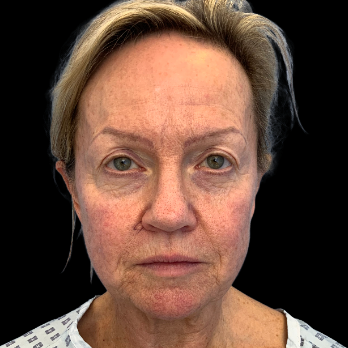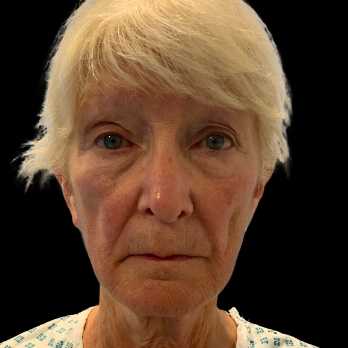
Stem Cell Facelift
A stem cell facelift is a technique of combining facelift surgery with the injection of stem cells derived from your own fat. The advantage of this technique is that it combines the lifting effect of surgery a very powerful means of making the skin look younger and fresher.
Stem cells are the regenerative cells in the body which provide healing and restorative potential. This is an exciting field of medicine which is called regenerative medicine.
The stem cells are isolated by using a specialised purification technique of fat which results in extremely fine fat particles called nanofat. It is in these nanofat particles that one also finds a high concentration of stem cells.
The specific use of nanofat in the face is to restore volume but the stem cells associated with the nanofat improve the quality of the skin itself.
Nanofat is used in the deeper tissues of the face but can also injected into the skin itself through needles which are as fine as needles used for dermal fillers. This means that the nanofat particles and especially the stem cells are directly placed in the dermis of the skin where the regenerative effects help improve the thickness and consistency of the skin itself. Improvements are seen in both fine wrinkles but also in the general complexion of the skin. These effects are more long lasting than other techniques since the regenerative cells are being placed into the skin.

Nanofat techniques can be further refined to increase the concentration of stem cells using further processing to produce a Stromal Vascular Fraction (SVF). This has a hundred fold higher concentration of stem cells. This fraction has an even higher regenerative potential.
You may have heard of PRP ( platelet rich plasma) which uses the growth factors from platelets to improve skin quality. These growth factors have a temporary effect since no cells are transferred. The aim of PRP techniques is to help boost the activity of the skin but the effect is transient. As soon as the effect of the injection of growth factors passes the skin returns to its previous state. However, Nanofat and SVF stem cell techniques are superior to PRP since the stem cells themselves remain in the skin long term and have a greater regenerative potential overall producing a long term effect.
In the example of a stem cell facelift patient below you can see how the surface irregularities of the skin on the cheeks have been treated with Nanofat and Stem Cell injections. This improvement cannot be achieved by the facelift alone.


Before Stem Cell Facelift Procedure: Cheek skin with deep lines
After Stem Cell Facelift Procedure: Deep lines have been treated with Nanofat
How is the Stem Cell Facelift surgery performed?
At the start of the procedure a small amount of liposuction is performed either from the abdomen or inner thigh via a very small incision. This fat is then prepared by filtering successively into smaller and smaller particles. Some of the fat which is in solution is centrifuged in order to extract a higher concentration of stem cells in what is called the Stromal Vascular Fraction (SVF) . These stem ells are mixed back into the nanofat and prepared into very small syringes with an extremely fine needle for injection. The nanofat/stem cells are injected into the skin and fine lines where it is needed before proceeding with the facelift procedure. A full face skin injection can also be performed for a whole face skin rejuvenation benefit. After these injections have been placed the work on the deep plane of the face is commenced for the facelifting surgery.
You can view this fat being injected in the video below:
Recovery from Stem Cell Facelift Surgery
Usually when a facelift on its own is performed there is minimal bruising and swelling. However, when fat injections are combined there is more swelling and usually more bruising. The majority of the swelling will subside after approximately 1 to 2 weeks. The bruising may be quite noticeable in the first week and then slowly diminish to leave a yellow tinge to the skin by the end of the second week. Usually by the third week the bruising has resolved.
The overall process of healing means that there may be a little puffiness to the face which may take about 6 weeks to settle and during this time it is important to restrict strenuous exercise.
The best results are seen between three to six months
You can view the full recovery from beginning to end of one of my patients in the video below
What are the risks associated wtih Stem Cell Facelift Surgery?
It is important to understand that the fat which is injected is a graft and needs to heal in its new position on the face. As such some fat may not heal and the body will absorb it. If the fat is being used to provide volume to the face this means some of the effect will be lost. Usually the effect of the stem cells will be long lasting even if there has been some volume loss. Overall, approximately 1 in 5 patients may experience some failure of the fat grafting. However, a top up procedure may be performed at a later date which is now a smaller surgery.
Many times patients may have concerns about irregularities from the fat graft. However, with modern technology such as nanofat grafting such risks are extremely rare since the fat particles are so small they tend not to cause irregularity.
-
Stem Cell Facelift Surgery Patient Case Study
This patient has had a full face rejuvenation including a deep plane facelift and neck lift combined with nanofat stem cell injections. In particular she had a considerable amount of sun damage to her skin which can be seen with pigmentation, deeper lines in the cheek and an overall very rough texture to her complexion . For a 59 year old lady this making her appear beyond her age . The after photos at 6 months show how the complexion and lines have been considerably improved. At the same time the facelift and necklift has greatly improved her jawline and neck. She also had upper and lower blepharoplasty surgery.











